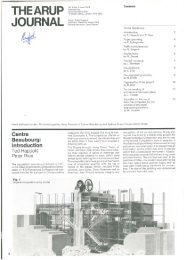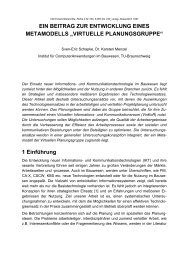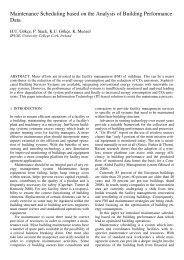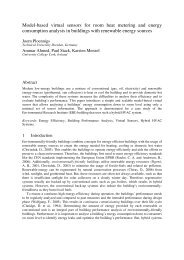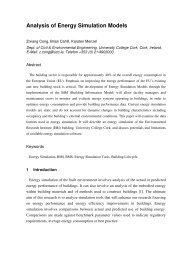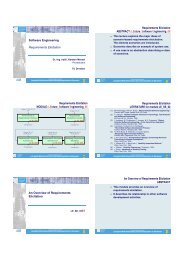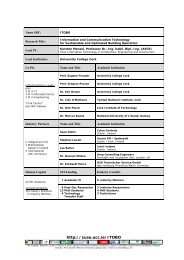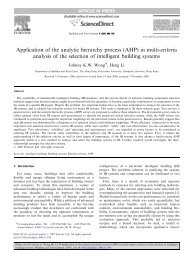A Middleware Architecture Supporting Native Mobile Agents for ...
A Middleware Architecture Supporting Native Mobile Agents for ...
A Middleware Architecture Supporting Native Mobile Agents for ...
Create successful ePaper yourself
Turn your PDF publications into a flip-book with our unique Google optimized e-Paper software.
4 Significance and Discussion<strong>Middleware</strong> <strong>Supporting</strong> <strong>Native</strong> <strong>Mobile</strong> <strong>Agents</strong> <strong>for</strong> WSN 74.1 Robustness and Self-ManagementThe system uses interlocking agents to guarantee reliability. The loss of anyagent or node in the network will not lead to complete system failure. If a noderesets, the next time the management agent visits, the control agent will bereestablished. A new data gathering agent is genereated <strong>for</strong> each operation, losswill simply limit the current control operation. The most damaging failure isthe failure of the management agent. Assuming that at least one of the controlagents survives, it will summon a new management agent, which will rediscoverthe network.Once all of the agents have been established, the system is entirely selfmanaging.New nodes can be introduced into the network by simply placingthem within the transmission radius of existing nodes and node failures aredetected and resolved. Cooperating systems of mobile agents bring a new levelof robustness to mobile code systems. A suitably designed system can workaround or recover from complete node failures without any intervention fromoutside the network.4.2 Structure and FlexibilityThe primary benefit of the system is its flexibility. The dynamic distributed controlapplication trades off node coverage and availability <strong>for</strong> the most up-to-datesensor data, requiring an autonomous and self-managing system. This tradeoffis a design decision and not a limitation of the middleware. The application designeris free to position the application at any point within this tradeoff, andhas complete control over the per<strong>for</strong>mance.The agent carrier system allows multihop transfers to take place seamlessly,and takes common mobility operations out of the agent, while the blackboardsystem allows inter-agent communication.The native mobile software agent introduces a new level of per<strong>for</strong>mance <strong>for</strong>mobile applications, beyond what is currently possible with existing mobile agentsystems <strong>for</strong> wireless sensor networks. This allows true autonomous multi-agentsystems. It is only with networks of cooperating agents that the true benefits ofmobile software agents are realised.4.3 AlternativesApplications such as those presented here, with dynamic discovery and networkanalysis, fault monitoring and control decisions are simply too complex to beimplemented in a VM. The agent size benefit of a VM-based system is onlyrealised the first time an agent visits each node – after this, only the operatingstate is transferred. The actual control operation could be implemented usingTinyDB or some similiar data gathering tool. This requires an external agentto generate the queries and interpret the results – the sensor network is simplyfunctioning as a data gathering tool.




